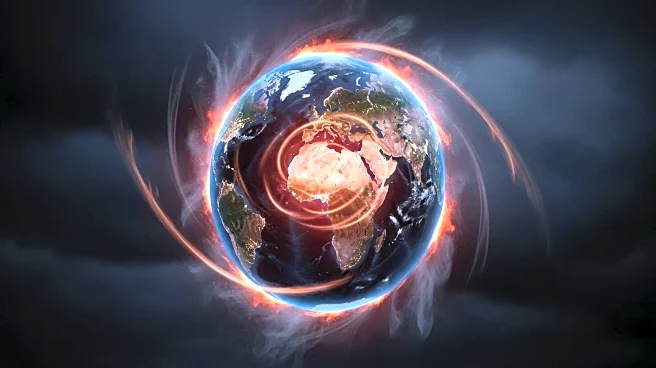What is the story about?
What's Happening?
Recent studies have examined the impact of the 2019-2020 Australian bushfire smoke on Pacific climate patterns, particularly its role in sustaining multi-year La Niña events. The research highlights how negative sea surface temperature (SST) anomalies spread across the Pacific, influenced by the bushfire smoke, and contributed to prolonged La Niña conditions. These anomalies were observed in models CESM2 and E3SMv2, showing significant cooling effects in the equatorial Pacific. The study suggests that the bushfire smoke may have influenced the Interdecadal Pacific Oscillation (IPO), a climate pattern affecting ocean heat content and atmospheric circulation.
Why It's Important?
Understanding the connection between bushfire smoke and climate patterns is crucial for predicting long-term climate variability. The sustained La Niña conditions have implications for global weather patterns, including increased precipitation in some regions and droughts in others. The findings could inform climate models and improve predictions of future climate events. Additionally, the research underscores the broader environmental impact of bushfires, beyond immediate air quality concerns, highlighting their role in altering oceanic and atmospheric dynamics.
Beyond the Headlines
The study raises questions about the ethical and environmental responsibilities of managing bushfire risks, given their far-reaching climate impacts. It also highlights the need for international collaboration in addressing climate change, as local events like bushfires can have global consequences. The research may prompt further investigation into the role of other environmental factors in influencing climate patterns, potentially leading to more comprehensive climate models.
AI Generated Content
Do you find this article useful?
















